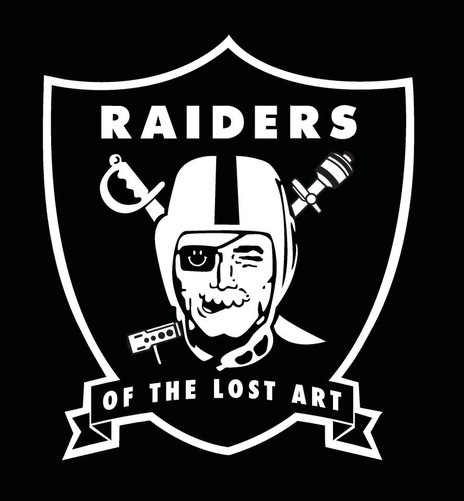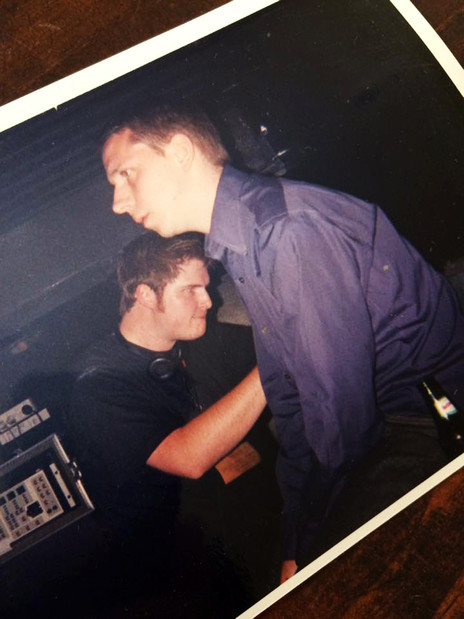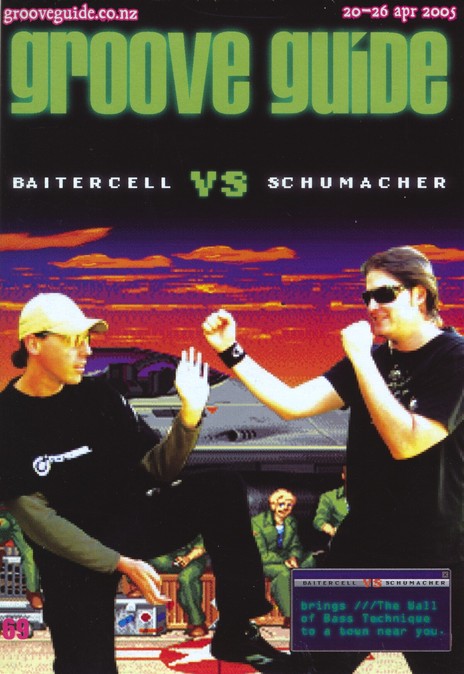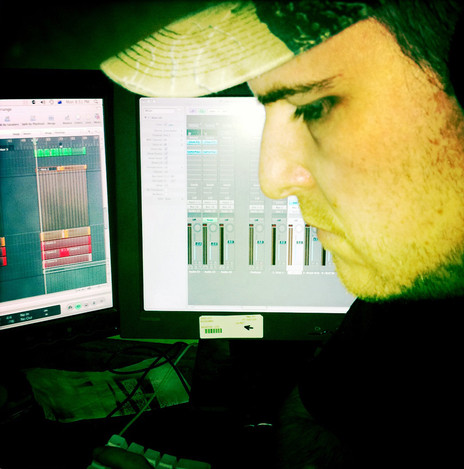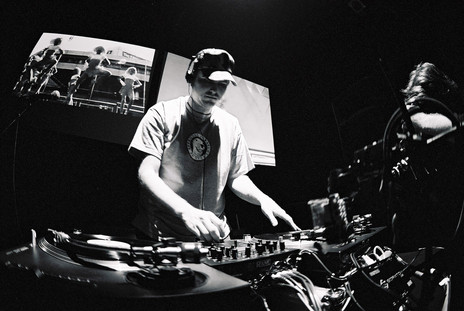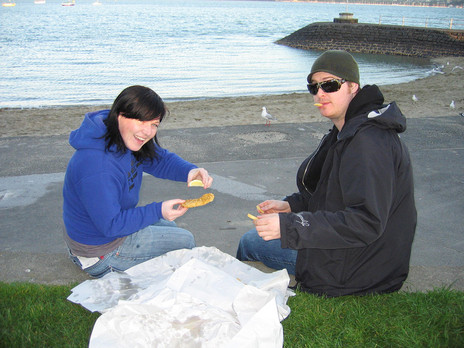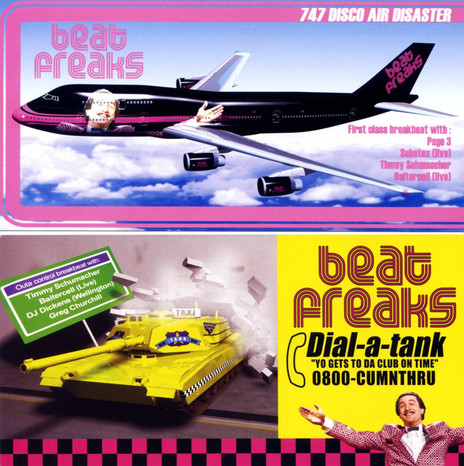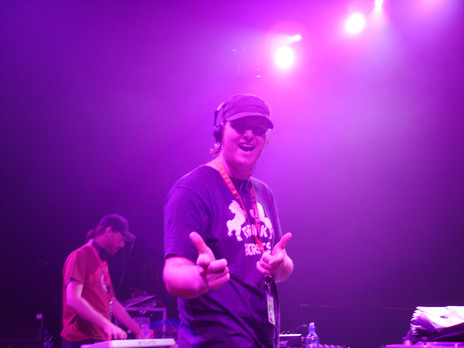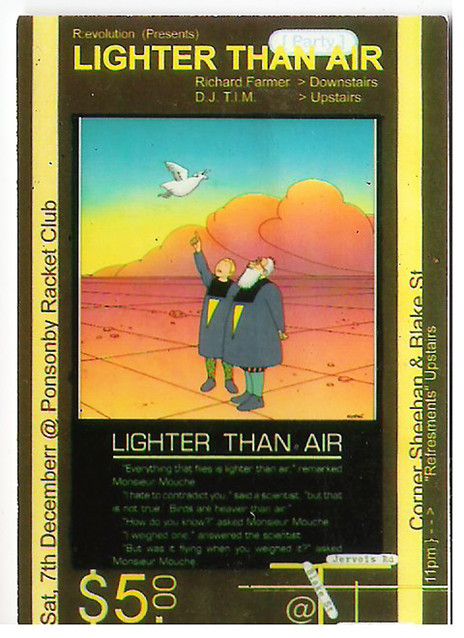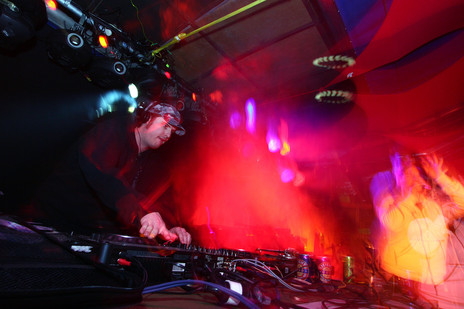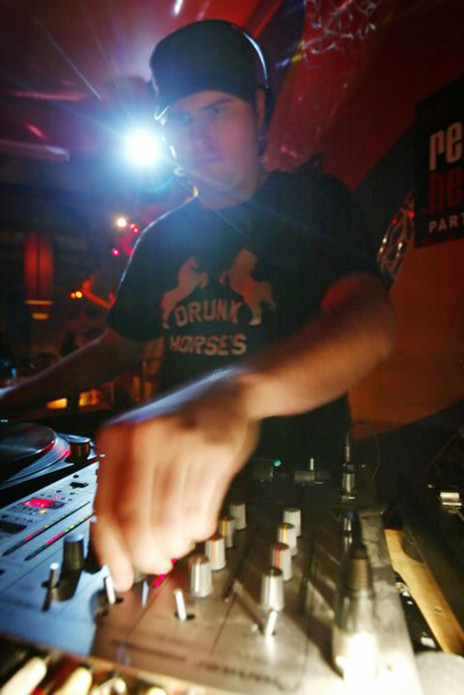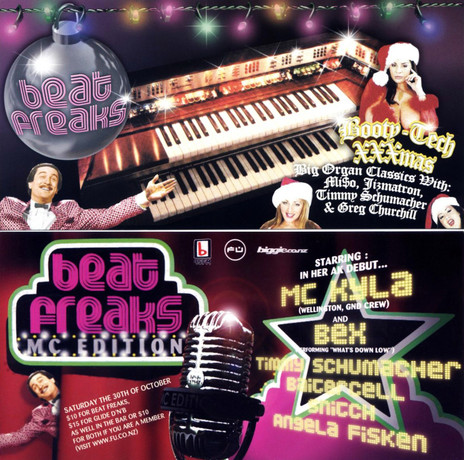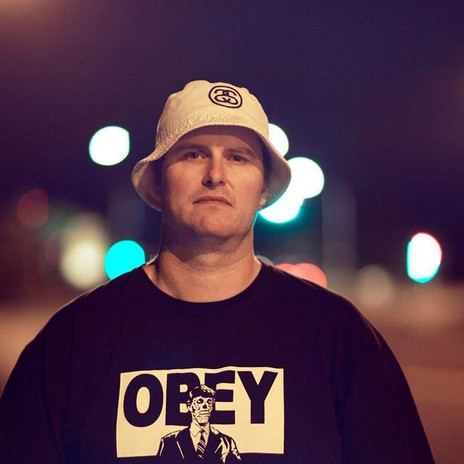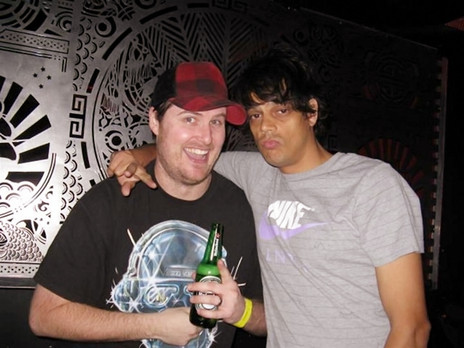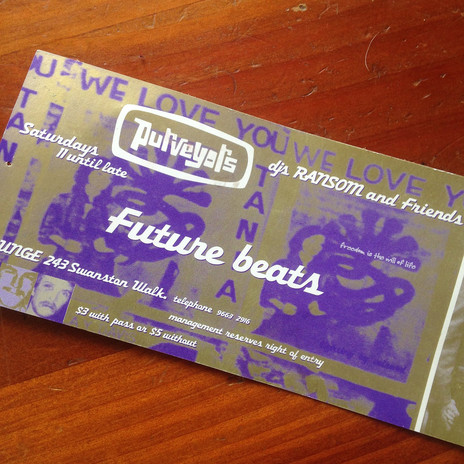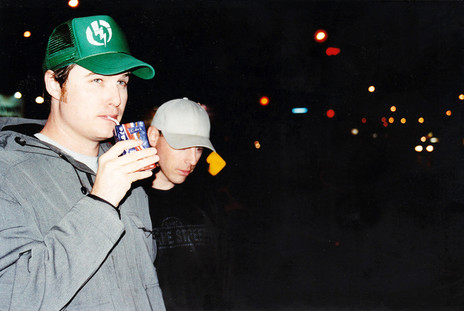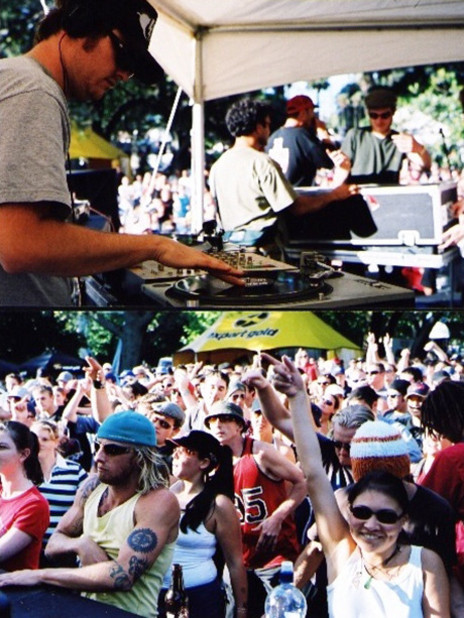Tim Adam first started DJing during the early 90s while still in his mid-teens. He originally used his given name, though toyed with being called “DJ T.I.M.” or “DJ Angry Bob” for a short period. The eclecticism of his taste made it difficult at first to find his place in the burgeoning Auckland dance music scene.
His early DJ style was “too left of centre for most people”
“I was trying to get gigs around the place, but I think my style was too left of centre for most people. I was really big on the acid jazz/trip hop/hip hop/weird dancefloor grooves crossover tip, and when I heard Gilles Peterson was coming to play at the Box I leapt on my opportunity and gave a mix to Simon Grigg. He booked me as opener for the gig, which for me was huge. That night was pivotal and pretty much solidified my position. From here Manuel Bundy suggested to management that I join the fray at Cause Celebre. I got more gigs and the bricks really started falling into place. My style widened and I started getting into Big Beat. I’d also been buying techno, electro, rave and leftfield stuff for ages. Everything musically was just kind of slow cooking into a style. I was hugely influenced by Coldcut’s 70 Minutes of Madness and how wide they went genre-wise. I was inspired by this and just trying to do my own thing I guess.”
Adam became a regular DJ at the clubs on High Street (primarily Box, Cause Celebre and The Icebox), though he also played the odd rave and even tried his hand at promoting his own events before deciding he’d stick to the music side of things. His sets varied widely across breaks, house, techno, garage, drum’n’bass, electro, booty bass, hip hop and downbeat.
As the scene changed, he took the name Timmy Schumacher and began playing regularly at Fu Bar on Queen St – the first of which was eclectic music night Chunk with DJ Snitch. Eventually, he started his own night, Beat Freaks, which was named after his 95bFM radio show (he’d previously hosted a slot at George FM called Dirty Listening). At this point, he settled more distinctly on breakbeat – a heavy amalgam of hip hop, breaks, and anything in between. Yet, he continued to throw odd tracks into the mix to keep his dancefloor excited – dropping The Datsuns when they first came out or laying down a remix of ‘Fools Gold’ by The Stone Roses. By the turn of the millennium, the dance music scene had grown sufficiently to have its own festivals and Schumacher played Phat, Splore and Rhythm and Vines in their early years.
Over this period, he also began playing in Australia. His first gig was through legendary Melbourne DJ Ransom (Crackpot – Tummy Touch Records), who heard a mix that Schumacher sent him and decided to give him a slot at his night Purveyors at The Lounge. When Ransom moved to the city’s hottest club, Revolver, he gave Schumacher the chance to play there as well. Schumacher went on to spin records in Sydney and played alongside top DJs such as Kid Kenobi and Brewster B at Fokus, a weekly breaks/techno night.
Back in New Zealand, Schumacher’s hard work was rewarded with a much-coveted support slot for Moby at The Box. He then DJ’d in front of 4,000 people supporting the Chemical Brothers at North Shore Stadium in 2002. The following year he played in front of a similarly large audience in The Boiler Room at the Big Day Out.
The pair formed Baitercell and Schumacher.
After a decade on the scene, he decided to move into production and his first move in this direction was attending the Red Bull Academy in London in 2002. “The course itself was two weeks long. For me, the thing I got out of it most was inspiration. It wasn’t really focused on giving you any technical knowledge, but I came back to New Zealand and said, ‘Right, this is what I’m doing.’ I bought a computer and hooked up with Chris Chetland, and started learning how to make my own tracks.”
The pair formed Baitercell and Schumacher, with Schumacher bringing his ear for what got a dancefloor moving and combining it with Chetland’s estimable production skills. They also brought on board a singer, Bex Riley, which meant they could move between accessible tracks with a front person and deeper cuts to appeal to breaks lovers. They showed their international aspirations early on by doing a run of shows in Australia in late 2003.
The following year, they released a 12" of ‘What’s Down Low’ on Passenger Records (run by respected electronica group, Aquasky). This track got played by some of the big figures in the scene, including Graham Gold and DK (Ninja Tune Solid Steel Radio Show), The Freestylers, and Jody Wisternoff (Way Out West). This led to ‘What’s Down Low’ being one of the best-selling releases Passenger ever put out.
An album followed, Wall Of Bass Technique (2005), which got them more attention locally, especially via the poppy single, ‘Lock And Load’, with its fast-paced video showing Bex as a video game character. However, their international acclaim was led more by their 12" releases through labels such as Resin Records (London), DJ Icey’s Zone Records (US), and their continued association with Passenger Records and offshoot, Black Noise. In fact, it often seemed as if overseas audiences were more receptive to their mix of dance music and hip hop orientated tracks (Mareko, 4 Corners, and Flow On Show all featured on the album), so it was difficult for them to move beyond the local club scene to a bigger audience.
From here, Schumacher went on to solo productions, releasing tracks overseas on labels such as Cut La Roc’s Rocstar Recordings, Ape Records, Ali B’s Air Recordings imprint, Broke, Resin, DJ Love’s Stellar Music and Klub Kids. He also continued to work with other local producers, including a collaboration with Substax on the track ‘Interstate Pimp’ which had a long run on local student radio. He also formed a partnership with MC Kyla, playing events such as 95bFM summer series, Phat parties, festivals and club nights.
His most enduring overseas connection was with Aquasky and Passenger Records. This led to a placement on the Bring The Ruckus compilation, released in 2013.
“I had a beat that suited the feel of the comp that I was keen to get a vocalist on. Kieron from Aquaksy suggested Spyda would be good on it and connected us. From there it was easy, he liked the beat and the verses he gave me were fire, very little fine tuning went on with the vocal because it was so good. Then we got picked up for the comp.”
His track with MC Spyda, ‘Rock Out’, was released with a music video by director Marc Swadel, which showed lead vocalist MC Spyda rapping in the dark in skull make-up, while a gang with similar make-up prowl the streets and smash a car to pieces. Schumacher is seen setting light to it at the end. Swadel had previously completed an equally striking video in 2010 for Schumacher’s track ‘Fire’ that had a set of Japanese housewives shopping for handguns.
Schumacher continued to support major internationals (including the Freestylers) and playing festivals (including Rhythm and Vines and a NYE party headlined by Supergroove in 2013), but gradually Schumacher found himself more interested in spending time in the studio than in DJing late at night in clubs. “In the old days people would follow DJs, now they seem to follow events. It’s all become incredibly backward and the whole shift to mainstream thing with electronic music has been a double-edged sword – yes it’s more in the public eye, but there’s a lot less discerning clubbers out there as a result. I have sorta retreated to the studio and I’ve found a second wind.”
In subsequent years, Schumacher’s attention shifted to his home life (he has three children) and a move to Australia. He continues to release music, including a two-track EP, Get Wild, in 2017, but it is no longer the central focus of his life. That being said, Schumacher has begun a new collaboration with another Sydney based expat, James Brown (ex Kolab, J Brown and the Mic Smith), which has led to a raft of new material produced under the pseudonym “Baffle”. The sound spans bass house, garage, ravey breaks and some jungilistic flavours.
With his new work, Timmy Schumacher continues his search for the biggest beats and the heaviest breaks. His live DJ sets might remain only as foggy memories for those who were there, but the tracks he produced have shown their staying power and will no doubt continue to find new fans who want to know what the art of the big break is all about.
